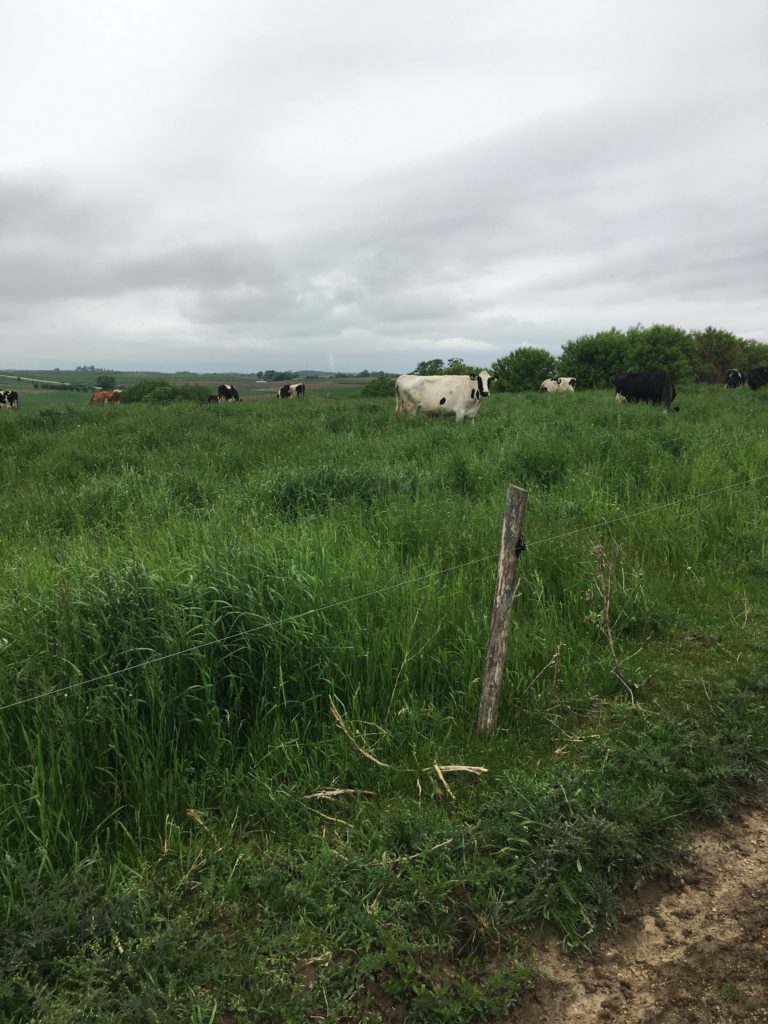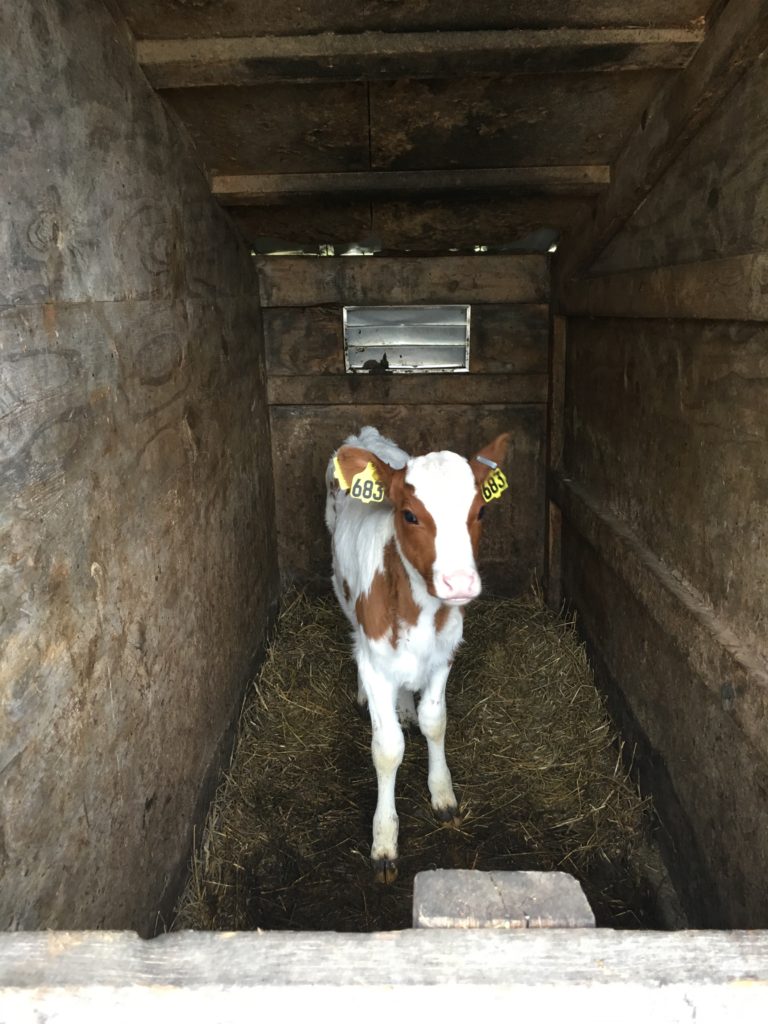Wednesday, May 29th
For a second time, I missed the early morning chores that Mark Kruse performs everyday to run his organic dairy farm. The life of a dairy farmer starts very early and I chose not to be sleep deprived. Later that morning Mr. Kruse gave us a tour of the dairy farm. There were similarities to the other dairy farms but also differences. Mr. Kruse also uses rotational grazing but unlike Mr. Peake and Mr. Dietzel, he only moves them once a day. It is a less-involved process then you would think. Kevin Dietzel builds a fence every time he moves his cows but Mr. Kruse simply opens up an adjoining pasture. He has close to 30 of these pastures to give a fresh pasture everyday. It also allows the pasture to put on new growth so as not to overgraze.


After the tour and breakfast, Marcia and Mark Kruse became our personal tour guides to Wisconsin. Organic Valley’s headquarters is located in Cashton, WI, and Mr. Kruse’s farm along with Mr. Peake, and the Welsh family are a part of the Organic Valley Co-op. We took a tour (I thought Iowa was cold last week until I stood in a negative 10 degree freezer) and met with Jim Wedeberg.
Organic Valley is a farmer-operated, democratic organization. They have a board of seven farmers that are elected every three years. Organic Valley brings together small family farms providing strength in large numbers. One of their success as a co-op has been the price of organic milk. In 1997, the farmers set a pay-price of milk to be $17.50/ cwt. As of today, they have met this goal and have even exceeded it. However, current trends are bringing struggles to the organic market. The consumer milk consumption patterns are changing. People no longer want to buy skim milk (instead there has been a shift towards full fat milk) and also the consolidation and industrialization of farms has made it hard for them to keep up. A bigger company is able to demand more and produce cheaper products. However, the coalition of small farmers within the co-op benefits everyone by giving them more power and resources than if farmers were on their own.
